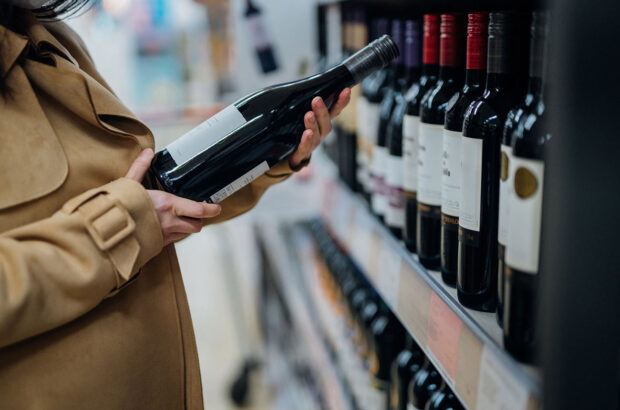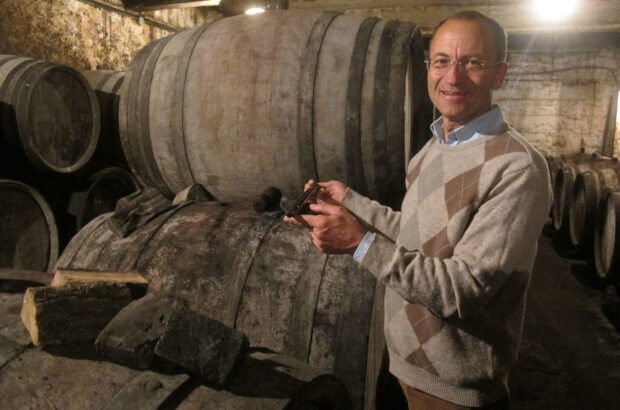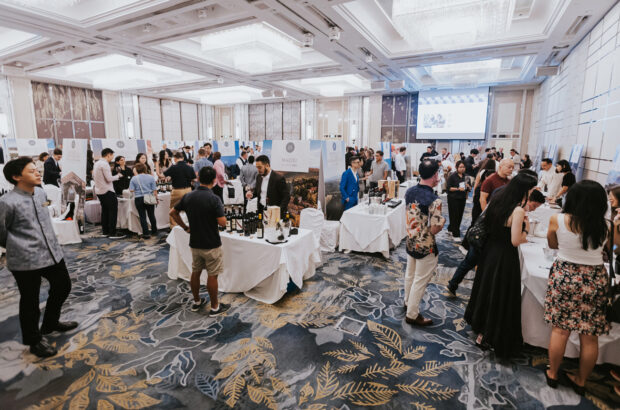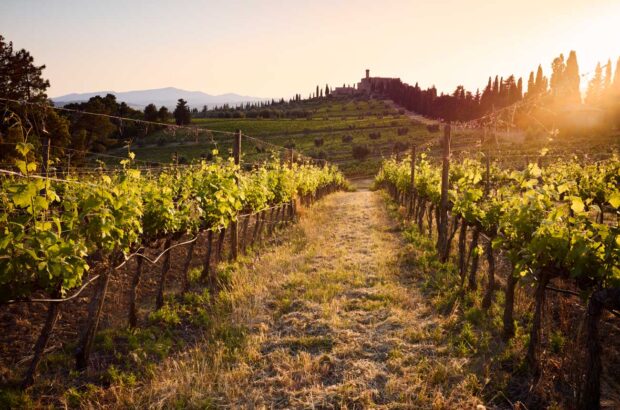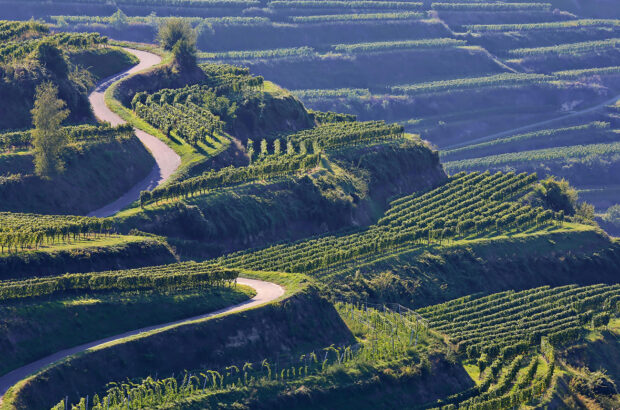Canada’s wine industry is young compared to that of many regions in the world, yet its evolution has been rapid and dynamic.
As climate change continues to reshape viticulture, could hybrids be the future of Canadian wine?
What are hybrid grapes?
Hybrid varieties are the result of crossbreeding two different grapevine species, typically European vitis vinifera with a native American species like vitis labrusca or the Asian vitis amurensis. They were originally cultivated for their resilience to cold temperatures and resistance to diseases and rot.
Ontario vineyards were historically planted to hybrids such as Seyval Blanc, Vidal Blanc and Baco Noir, which were imported from France, where they were bred to resist phylloxera after the devastation of Europe’s vineyards in the 19th century. The dominance of hybrids began to decline in the 1980s, though Vidal Blanc remains the province’s most-planted white variety, mainly used for Icewine.

Cold-hardy hybrid vines in Quebec. Credit: Conseil des vins du Québec / Quebec Wine Council.
Hybrids, both internationally and in Canada
Until recently, European Union wine laws banned hybrid grape varieties in Protected Designation of Origin (PDO) wines. Member states now regulate their use individually, and hybrids are widely grown in Northern Europe (and the UK) and are being tried in traditional regions like Bordeaux and Champagne.
New breeding programmes have produced Piwi (short for Pilzwiderstandsfähig in German, meaning fungal-resistant) varieties that require fewer chemical treatments. As sustainability becomes a greater priority, many see Piwis as a key part of the future of European viticulture.
Hybrid planting in Canada varies across the four major wine-growing provinces. Nova Scotia and Quebec mostly grow hybrids, while Ontario and British Columbia grow fewer.
In Nova Scotia, and especially in Quebec, a new generation of cold-hardy hybrids bred at the University of Minnesota with exotic-sounding names like Frontenac Noir, La Crescent and Petite Pearl, dominate the landscape.
In British Columbia, hybrid varieties Sauvignette and Petite Milo developed by Swiss grape geneticist Valentin Blattner, are grown alongside vinifera in the Vancouver Island, Gulf Islands and Fraser Valley appellations.
Canada also has its own homegrown hybrid variety. Originally known as V-53621, developed in Ontario’s Niagara region, the variety never caught on. It made its way to Nova Scotia, where it was embraced and renamed L’Acadie Blanc in recognition of the Acadian settlement of New France.
Past prejudice and present taste
Hybrids in Canada historically got a bad rap, with some winemakers and consumers believing they produce inferior wines. While this may have been true in the past, much of it stemmed from viticultural and winemaking missteps that produced wines with excessive acidity or ‘foxy’ flavours, which were unpalatable to both consumers and winemakers.
Modern winemaking techniques and viticulture practices have helped to overturn these characteristics, and a new generation of wine enthusiasts, unburdened by past biases, is embracing hybrids for their unique flavours. Winemakers also see economic and environmental benefits, and some hybrid varieties are well-suited to certain wine styles.
A sparkling future?

Bruce Ewert of L’Acadie Vineyards. Credit: Wine Growers of Nova Scotia.
Bruce Ewert, owner and winemaker at L’Acadie Vineyards in Nova Scotia, views hybrids as well-suited to sparkling wine production.
Ewert champions L’Acadie Blanc for its resilience and ability to produce high-quality sparkling wines, and has achieved perfect ripeness and freshness with L’Acadie Blanc in Nova Scotia for two decades. The proof is in the results, with his traditional method sparkling wines earning international acclaim and winning awards ‘in wine competitions dominated by vinifera,’ such as the Decanter World Wine Awards.
Many Quebec wineries have embraced hybrid varieties for sparkling wine production. Some traditional method sparkling wines, such as the organic Domaine Bergeville L’intégrale from Frontenac Blanc, L’Acadie Blanc, St-Pépin and Frontenac Gris or the Léon Courville Muse Brut from St-Pépin, exhibit finesse, vibrancy and complexity in ways few still wines can match.
Dan Wright, winemaker at Vancouver Island’s Unsworth Vineyards, believes ‘hybrids are making quiet gains’ and that ‘consumers are seemingly indifferent’ to the increased proportion of hybrid grapes in his Charmat-method sparkling wine, Charme de l’île. Nonetheless, Wright still sees vinifera superior in viticulture, winemaking and economics, noting that vinifera varieties ‘enjoy more consumer recognition and command a higher price’.
Jonas Newman, winemaker at sparkling wine house Hinterland Estate in Ontario’s Prince Edward County, values hybrids for their consistency and reliability. He also appreciates how ‘lower farming inputs required for hybrids result in more affordable wines… making wine more accessible to new consumers’.
However, Newman acknowledges ‘hybrids will always fall short of the complexity and sense of place that vinifera provides’ but sees promise in new hybrid crossings, which are performing well in competitions… and hopeful for their future.’

Credit: Conseil des vins du Québec / Quebec Wine Council.
Changing climate, changing grapes
While most provincial wine laws in Canada restrict the use of hybrid varieties in appellation wines (largely in Ontario and British Columbia), there is growing recognition that hybrids can produce wines with complexity and character.
Extreme weather events, such as wildfires and harsh winters in British Columbia, spring frosts in Nova Scotia, increased humidity and temperature fluctuations in Ontario and reduced snowfall in Quebec, are causing some in the Canadian wine industry to reconsider traditional grape varieties and view hybrids as a practical and economic alternative in the face of a changing and unpredictable climate.
So, are hybrids the future of Canadian wine? For now, probably not. Vitis vinifera varieties still dominate vineyard plantings and are on the rise in hybrid-heavy regions like Quebec and Nova Scotia.
However, hybrids will continue to play an important role by enabling grape growing in areas once considered too extreme and offering a more dependable option in established regions where climate change continues to test the resilience of vitis vinifera.



